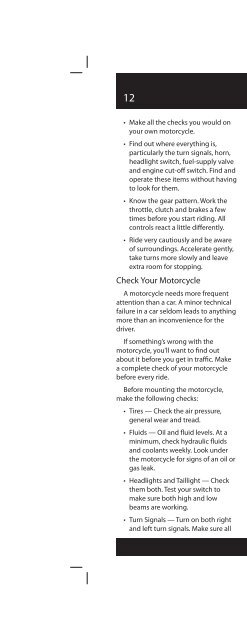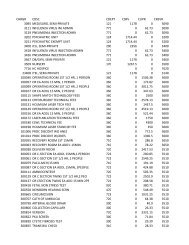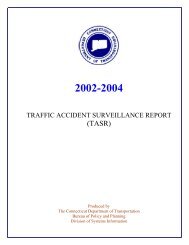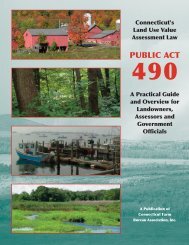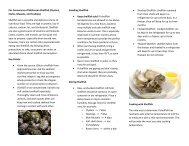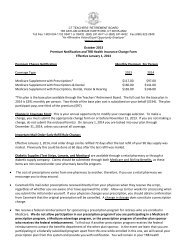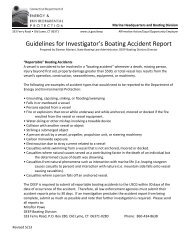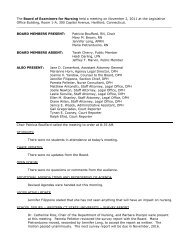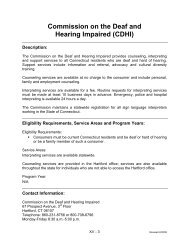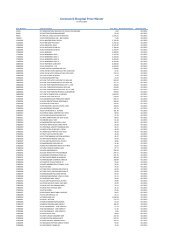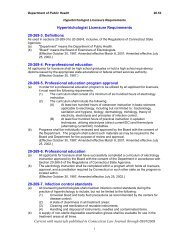The Connecticut Motorcycle Operator's Manual - CT.gov
The Connecticut Motorcycle Operator's Manual - CT.gov
The Connecticut Motorcycle Operator's Manual - CT.gov
Create successful ePaper yourself
Turn your PDF publications into a flip-book with our unique Google optimized e-Paper software.
12 PREPARING TO RIDE<br />
• Make all the checks you would on<br />
your own motorcycle.<br />
• Find out where everything is,<br />
particularly the turn signals, horn,<br />
headlight switch, fuel-supply valve<br />
and engine cut-off switch. Find and<br />
operate these items without having<br />
to look for them.<br />
• Know the gear pattern. Work the<br />
throttle, clutch and brakes a few<br />
times before you start riding. All<br />
controls react a little diff erently.<br />
• Ride very cautiously and be aware<br />
of surroundings. Accelerate gently,<br />
take turns more slowly and leave<br />
extra room for stopping.<br />
Check Your <strong>Motorcycle</strong><br />
A motorcycle needs more frequent<br />
attention than a car. A minor technical<br />
failure in a car seldom leads to anything<br />
more than an inconvenience for the<br />
driver.<br />
If something’s wrong with the<br />
motorcycle, you’ll want to fi nd out<br />
about it before you get in traffi c. Make<br />
a complete check of your motorcycle<br />
before every ride.<br />
Before mounting the motorcycle,<br />
make the following checks:<br />
• Tires — Check the air pressure,<br />
general wear and tread.<br />
• Fluids — Oil and fl uid levels. At a<br />
minimum, check hydraulic fl uids<br />
and coolants weekly. Look under<br />
the motorcycle for signs of an oil or<br />
gas leak.<br />
• Headlights and Taillight — Check<br />
them both. Test your switch to<br />
make sure both high and low<br />
beams are working.<br />
• Turn Signals — Turn on both right<br />
and left turn signals. Make sure all<br />
lights are working properly.<br />
• Brake Light — Try both brake<br />
controls, and make sure each one<br />
turns on the brake light.<br />
Once you have mounted the<br />
motorcycle, complete the following<br />
checks before starting out:<br />
• Clutch and Throttle — Make sure<br />
they work smoothly. <strong>The</strong> throttle<br />
should snap back when you let go.<br />
<strong>The</strong> clutch should feel tight and<br />
smooth.<br />
• Mirrors — Clean and adjust both<br />
mirrors before starting. It’s diffi cult<br />
to ride with one hand while you<br />
try to adjust a mirror. Adjust each<br />
mirror so you can see the lane<br />
behind and as much as possible of<br />
the lane next to you. When properly<br />
adjusted, a mirror may show the<br />
edge of your arm or shoulder—but<br />
it’s the road behind and to the side<br />
that’s most important.<br />
• Brakes — Try the front and rear<br />
brake levers one at a time. Make<br />
sure each one feels fi rm and holds<br />
the motorcycle when the brake is<br />
fully applied.<br />
• Horn — Try the horn. Make sure it<br />
works.<br />
• Fuel Supply Valve — Make sure<br />
the valve is open. Your motorcycle<br />
may start with fuel still in the lines,<br />
but it will stall once the lines are<br />
empty.<br />
In addition to the checks you should<br />
make before every trip, check the<br />
following items at least once a week:<br />
Wheels, cables, fasteners and fl uid<br />
levels. Follow your owner’s manual to<br />
get recommendations.


